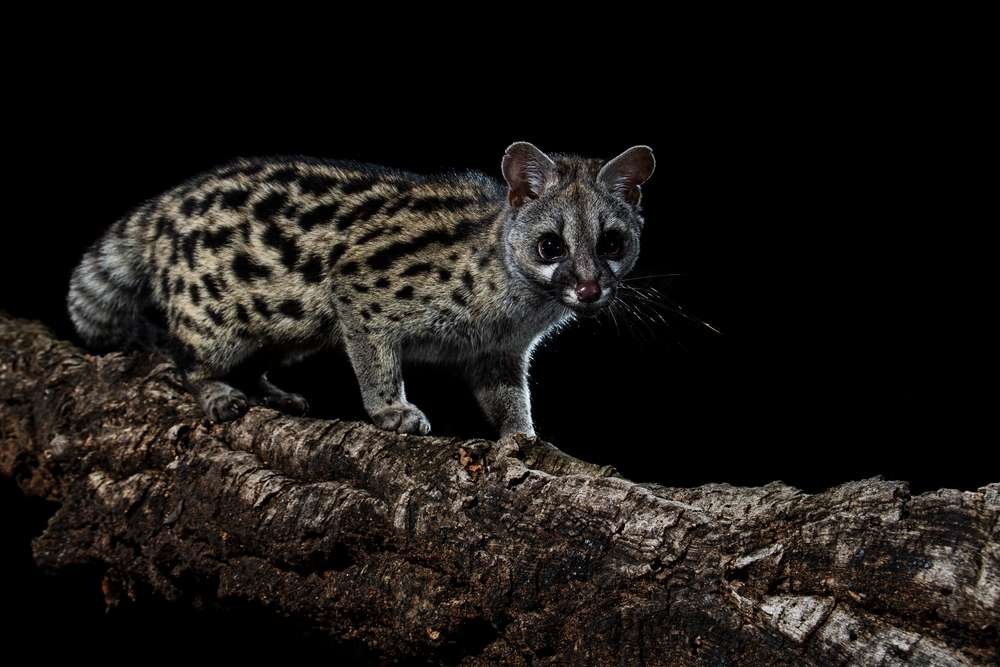Common Genet
( Small spotted genet )
- Genetta genetta
- IUCN Status: Least Concern
- Trend: decreasing

- Kingdom: Animalia
- Phylum: Chordata
- Class: Mammalia
- Order: Carnivora
- Suborder: Feliformia
- Family: Viverridae
- Genus: Genetta
Share:
General Information
The common genet is the most common subspecies of genet. They are indigenous to africa and were introduced to other parts of the world
Fun Facts!
Description
- Length: 43 to 55 cm
- Weight: average of 2 kg
Ecology and Behaviour
The common genet is solitary. The common genet uses five distinct calls. The “hiccup” call is used to indicate friendly interactions, such as between a mother and her young, or between males and females prior to mating. Conversely, clicks, or, in younger individuals, growls, are used to indicate aggression. The remaining two calls, a “mew” and a purr, are used only by young still dependent on their mother.
It has a varied diet comprising small mammals, lizards, birds, bird eggs, amphibians, centipedes, millipedes, scorpions, insects and fruit, including figs and olives. The wood mouse is a favourite prey item, It also prey on squirrels and dormice. Genets locate their prey primarily by scent, and kill with a bite to the neck, like cats. Small rodents are captured by the back and killed with a bite at the head, then eaten starting with the head. Both male and females mark their territor and they defecate at specific latrine sites which are usually at the edge of their territory.
Conservation
It is listed as Least Concern on the IUCN Red List.
Distribution and Habitat
It inhabits a wide range of deciduous and evergreen habitats that provide plentiful shelter such as rocky terrain with caves and dense scrub land, but also come close to settlements and agricultural land. It is rarely sighted in Zambia. It prefers to live in areas with dense vegetation, such as bushes, thickets, and evergreen oak forests. As resting sites it uses trees with dense foliage in the canopy and dense thickets overgrown with climbing plants.
Interaction with humans
No donation to this project yet.
| M | T | W | T | F | S | S |
|---|---|---|---|---|---|---|
| 1 | 2 | 3 | 4 | 5 | 6 | 7 |
| 8 | 9 | 10 | 11 | 12 | 13 | 14 |
| 15 | 16 | 17 | 18 | 19 | 20 | 21 |
| 22 | 23 | 24 | 25 | 26 | 27 | 28 |
| 29 | 30 | 31 | ||||


